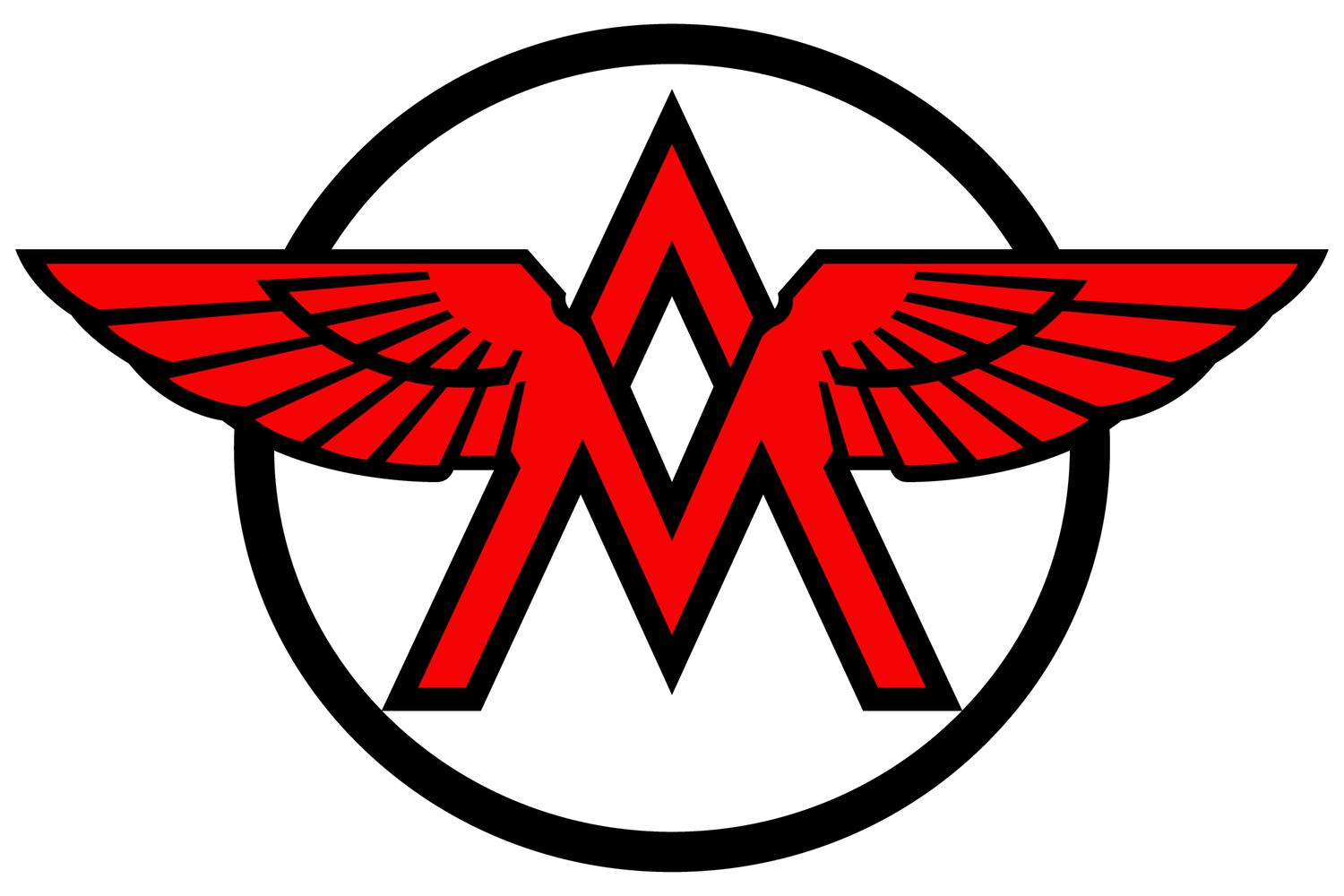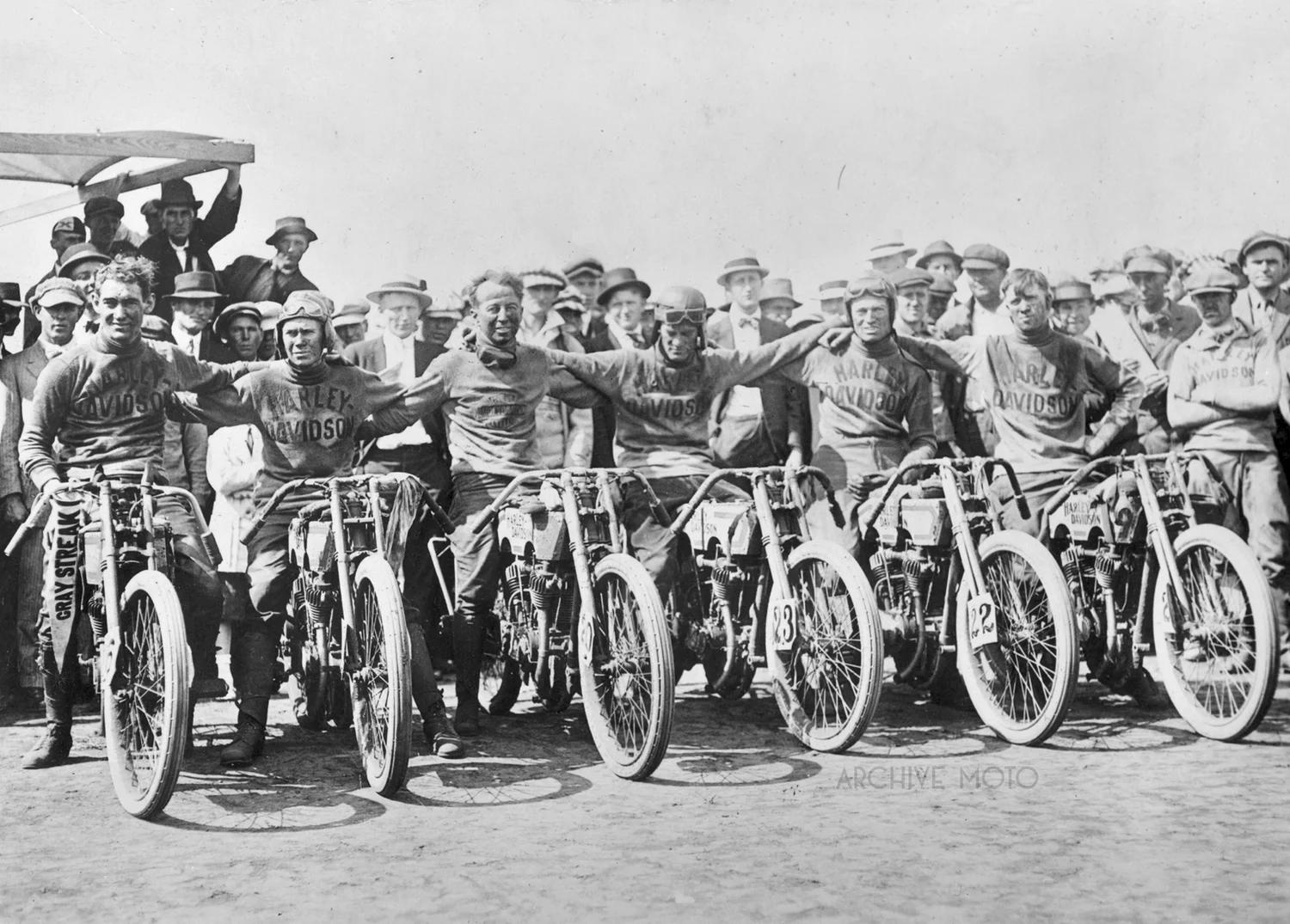Pictured is Jacob DeRosier, the world’s fastest motorcycle racer shortly after his turbulent run down south onboard his Excelsior “7” at a race in Guttenberg, NJ on October 29, 1911.
With the exceedingly popular motordromes having all closed for the winter of 1911, four of America’s most popular racing stars, Jake DeRosier, Charlie Balke, Eddie Hasha, and Arthur Mitchell headed south from what had been quite an interesting first season at Chicago’s Riverview Motordrome in hopes of shaking loose all the money they could on the numerous State Fair dirt tracks. With shocking factory roster changes, innovative and powerful new factory racing machines, and a sport continuing to grow more lucrative by the day, the second half of 1911 was to represent a monumental shift in American motorcycle racing history, and the competition that took place on the 1 mile dirt oval of the Alabama State Fairgrounds in Birmingham, Alabama would epitomize this rapidly changing sport.
For years Jake DeRosier could have easily been considered the most popular racer in the world, but his fame had recently reached new heights after his performance at the prestigious Isle of Mann TT race and on the famed Brooklands circuit in Great Britain. On seemingly every printed page ads and articles with photos of DeRosier appeared in trade magazines and sports sections. Upon his return to America in August of 1911, DeRosier seemed keen to capitalize on his fame and attempted to solicit exhibition rides at the handful of motordromes. However, track promoters were not interested in a DeRosier exhibition, they wanted him to compete, and they certainly were not going to pay his requested appearance fee just for him to simply show up.
In his absence Chicago's Riverview Stadium opened and had instantly become the hottest track in the country, so naturally when DeRosier arrived he quickly set off for America's newest drome. The lack of interest in exhibition laps featuring the great DeRosier must have been weighing on Jake’s mind when he arrived in Chicago, but the real gut punch was still to come. As he stood, the reigning king of the sport, he could only watch as a number of his speed records began to fall one by one at the hand of Denver’s Joe Wolter’s and his new machine, the mighty Excelsior 7. DeRosier and his Indian teammate Charlie Balke had been outmatched by the new Excelsior, a fact that DeRosier was quick to notify Springfield about in a letter requesting faster machines for the pair. In a decision which still retains some mystery to this day, both Balke and DeRosier were hastily released from their contracts with Indian, a true shock seeing as how DeRosier had been associated with Indian since the very first days of the company and Balke was considerably the best new professional in the country. Without missing a beat DeRosier and Balke were immediately picked up by Excelsior and were back on the boards in Chicago by September 2nd. The pair however, would only have a few short weeks to acclimate to their new mounts as Riverview would be closing at the end of the month.
Brimingahm’s veteran speed King Robert Stubbs was ready for the Riverview boys when they arrived in the Magic City in October, and the crowds flooded into the State Fairground track to see the clash of the two-wheeled titans. Beginning Thursday, October 5, 1911 (105 years ago today) races were scheduled each day through the following Saturday the 14th ranging from 3 miles to 25. Each heat brought different parings, and hair raising battles in the Alabama dust, but Jake DeRosier’s new Excelsior mount was inconsistent at best, leaving him dead on the line more often than not. Charlie Balke, who was having far less trouble with his new mount, cleaned up at Thursday and Friday’s races, though Stubbs was never far behind. However, after only two days of racing, it was the events that occurred after the track closed on Friday night that captured the attention and the imagination of the press. Reports vary as to the timeline of the accusations, but DeRosier is said to have grumbled that Birmingham was a town deeply rooted and invested in Indian, at the influence of Stubbs no doubt, and that any other make couldn’t get a fair shake. An odd proclamation seeing as all of the events so far had been won by his Excelsior teammate Balke, but one can assume that the notoriously temperamental DeRosier was not having a good run since his return from the UK and was not in the best of spirits. Never the less, his frustrations were brought to a head following the races on Friday after again his new machine left him standing still on the line. Though what was stated is unknown, the story reported states that Barbara Stubbs, Robert’s wife, took the opportunity to give DeRosier a good ribbing as he pushed his crippled machine off of the track Friday evening. Boiling no doubt, DeRosier then confronted Stubbs at the Hillman Hotel that evening about his wife’s remarks, of which Stubbs would hear nothing of and a fight broke out.
A diminutive man when standing next to Stubbs, DeRosier took a substantial beating. According to DeRosier, Stubbs’ beating was accompanied by fists from five of his buddies, and that the gash that was opened on his head was from a black jack or pair of brass knuckles used by Stubbs or one of his accomplices. The hotel being located directly across from City Hall, the police were quick on the scene, the commotion subdued, and Stubbs was ordered to pay a fine of $10 in court the next morning after which he headed back out to the track for Saturday’s events. Needless to say, gossip traveled like wildfire in those days so the fairgrounds were flooded with spectators eager to see what was about to happen on the track after such a eventful Friday night in downtown Birmingham.
Pictured is Jacob DeRosier, the world’s fastest motorcycle racer shortly after his turbulent run down south onboard his Excelsior “7” at a race in Guttenberg, NJ on October 29, 1911.







